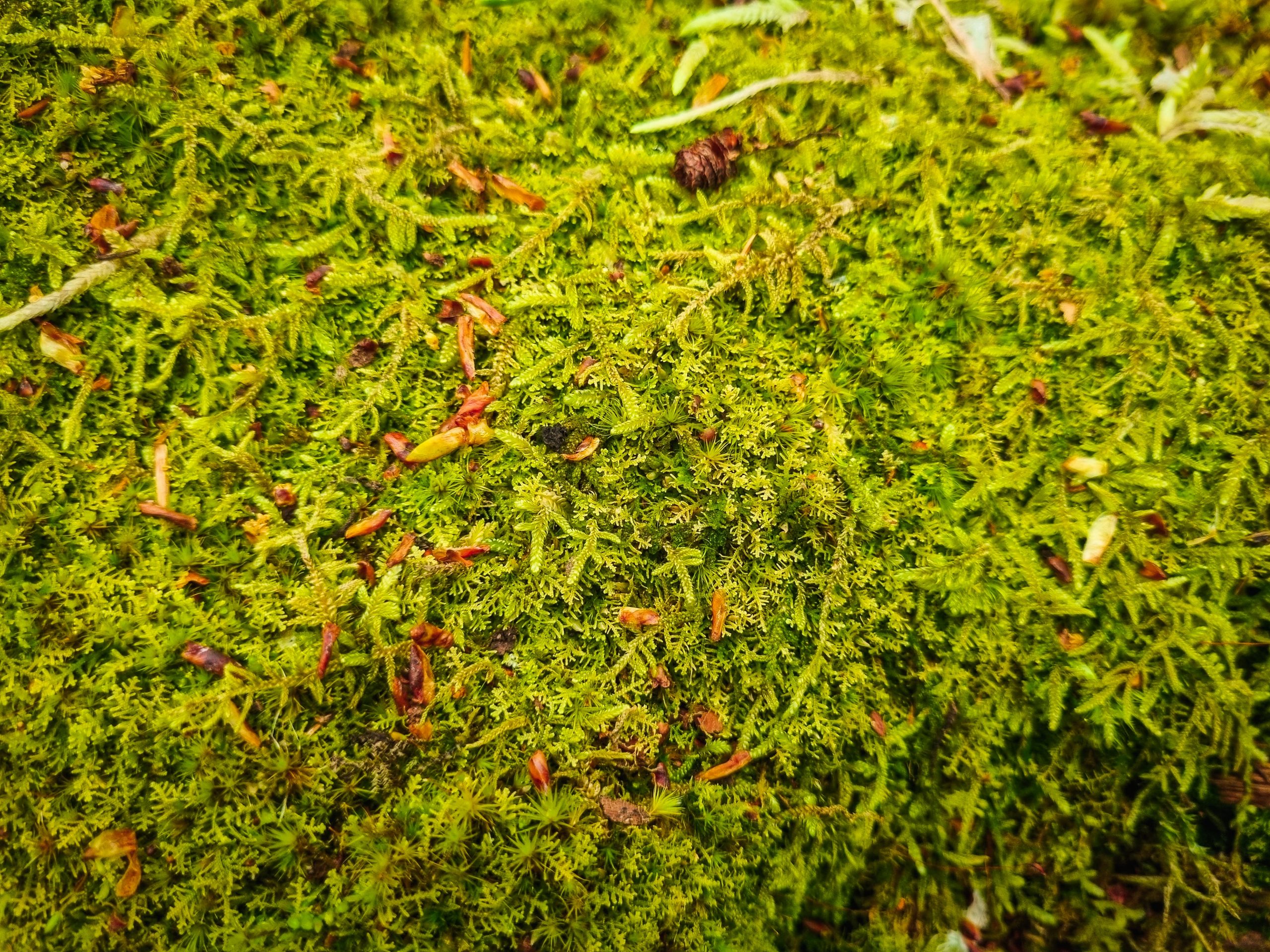Last Updated on April 5, 2024 by Real Men Sow
Lawn moss may form dense mats that outcompete grass for nutrients and water, making it uneven and difficult to walk on. These primitive plants can thrive in moist, shady environments and spread quickly in lawns that are struggling. Let’s dive into the best ways to remove lawn moss!

Getting Rid of Lawn Moss
Moss on lawns can indicate a problem. It can be caused by a variety of factors including:
- Poor drainage
- Shade
- Insufficient fertiliser
- Too short grass
- Heavy foot traffic
In areas with poor drainage, fern-like and feathery mosses are more common. Mat-forming mosses are encouraged by acidic soils. In severe conditions, it is also needed to level your garden to get back to its normal condition.
A two-pronged approach is required to rid lawns of moss: first, remove it and then, stop it from coming back.
Scarifying (i.e., cutting) is a physical method of removing moss. To remove moss and dead grass, rake the lawn. This can be done manually with a spring tine rake for small gardens. A scarifier machine is more effective for large areas.
It may be possible to remove mild moss problems by scarifying the lawn and then maintaining a healthy lawn with regular lawn care. This will prevent the moss from coming back. For lawns with serious moss problems, a combination of scarifying, moss killer and lawn care is necessary.
Lawn Moss Killers
The most effective way to eradicate moss from lawns is with chemical moss killers that contain ferrous sulphate, also known as sulphate iron. Chemical moss killers can also contain a fertiliser. This is helpful for lawns that have lost their vigour. Chemical moss killers should be applied in the autumn or spring, when it is cool and damp. This allows lawn seed to germinate best if it is not too late.
Organic moss killers can be used by gardeners who don’t want to use synthetic chemicals. These products don’t contain iron sulphate and instead use bacteria to break down the moss. Organic moss killers have the advantage that the bacteria ‘digests’ the moss in place, so it doesn’t turn black and doesn’t need to be raked out. Organic moss killers must be kept at a temperature of 15ºC (59ºF). They can be used from spring through autumn.
Tips on using Lawn Moss Killer
- You can apply moss killer by hand or using a spreader that can push the lawn. Chemical moss killers can affect soil acidity so make sure to cover the entire lawn and not just the problem areas. Otherwise, the lawn will grow patchy and discolored.
- Before applying moss killer, make sure you read all instructions. Do not apply more than the recommended concentration. This can cause damage to the grass or even death.
- Moss killer should only be used in fine weather. However, it is important to always read the instructions of the manufacturer, as some products may require watering to activate.
Applying chemical moss killer the right way ?
Autumn or spring is the best time to use a chemical moss killer. It is also when it is damp and cool. Any bare spots left after the moss has been removed may be re-seeded.
- Scarify the moss first if it is thick before you apply a moss killer.
- Follow the manufacturer’s directions when applying moss killer.
- To rake the moss out of the lawn, use a spring tine or mechanical scarifier once it turns black. This usually takes between two and three weeks.
Although the raked-out Moss can be composted it will take a while to start to decompose so you should add it slowly to your compost pile.
Lawn care after Moss
Moss on a lawn is a sign that there is an issue with the lawn. If this is not addressed, the moss will come back. To discourage moss growth, the best thing to do is to encourage vigorous grass growth.
Steps to reinvigorate your lawn
- In autumn, irrigate the lawn by making small holes in the soil. You can use a garden fork to push the soil in small areas. Then, remove it. It’s much easier to use a machine aerator for large areas.
- You can reseed any areas that are sparse or bare. You are more likely to get moss in shady areas. Use grass seed mixes specifically designed for this purpose.
- After re-seeding and aerating the lawn, apply a lawn top treatment. Pre-made top dressings are available at garden centres. You can also make your own by mixing three parts loam with six parts sharp sand, one part multipurpose compost and one part multipurpose soil. Use a garden brush to spread it evenly on the lawn.
- Do not cut too short when mowing the grass. This will cause the grass to become stressed, which can lead to a decrease in its strength and encourage moss growth.

